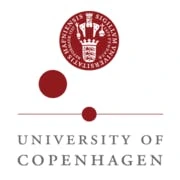Urbanisation and Health – Promoting Sustainable Solutions
More than half of the world’s population lives in cities, while only 5% did so in the 18th century. The rapid urbanisation has resulted in, for example, inadequate infrastructure, physical inactivity, gentrification, air pollution, and growing numbers of slum dwellers. All factors challenging the health and wellbeing of the people living in the cities. In addition, when addressing climate change, it has become of paramount importance to look at mitigation and adaptation investments tailored to the urban context.
As stated in the Sustainable Development Goal 11 adopted by all United Nations member states in 2015, societies need to be at the forefront in the continuous management and design of urban spaces to secure that cities and human settlements are inclusive, safe, resilient, and sustainable. In this course, you will learn about the key determinants of urban health, including demography, climate change, air pollution, noise, transport systems, public and blue and green spaces, and policies and investments affecting the sense of community and public safety. You will get a historical overview of the major trends in urban planning and meet a range of stakeholders in urban planning who will provide examples of innovative methods and people-centered approaches to create sustainable solutions. Finally, you will be provided with a series of resources to inspire you to help create awareness and action around an idea or sustainable solution in the field of urbanisation and health. The course has been developed (with support from EIT Health) in a partnership between the University of Copenhagen, Universidad Politécnica de Madrid, and the University of Coimbra. Researchers and stakeholders in urban planning will introduce you to cases from cities in Denmark, Spain, Portugal, and many other urban settings across the world. The aim of the course is to further interdisciplinary knowledge on urbanisation and health. We plan for the courses to reach citizens and activists as well planners, practitioners, and decision-makers with a professional interest in sustainable urban planning from countries around the world.

University of Copenhagen
The University of Copenhagen is the oldest University in Denmark – founded in 1479, and with over 38,000 students and more than 9,000 employees. The purpose of the University is to conduct research and provide education to the highest academic level. Based in Denmark’s capital city it is one of the top research institutions in Europe.
Included with Coursera Plus
Unlimited access to 3,000+ world-class courses, hands-on projects, and job-ready certificate programs, for one all-inclusive subscription price.

Image or Scan QR code below to learn more.


Building liveability: Copenhagen’s sustainable urban development
Is Copenhagen the World’s Most Sustainable City?
Is Copenhagen the world’s most sustainable city? It aims to be carbon neutral by 2025 – and here’s how it’s doing it. Subscribe https://freeth.ink/youtube-subscribe-… By 2050, 70% of the world’s population will live in urban areas (up from 50% now). With the climate crisis worsening, how can we support urbanization in a sustainable way? Copenhagen, Denmark is a city implementing strategies that could be a model for the future of cities. Climate change is driven by carbon emissions, so Copenhagen is embracing green energy, public transportation, and environmentalism as keys to urban sustainability. If it gets to net-zero emissions, it could provide a roadmap for green cities worldwide. 2/3 of the world’s carbon emissions come from cities, and with many countries in the developing world undergoing urbanization at the same time as economic development, urban sustainable development is an issue of high importance. What do you think – what global city is the best template for the city of the future? Or do you prefer rural living? Let us know what you think in the comments and stay tuned for more stories in Freethink’s new original series the Future of Cities.
Under the headline: “Partnerships for sustainable development: The Copenhagen case,” Copenhagen was one of the main themes at the Buenos Aires Architecture Biennial 2017.
Watch this short film to see how The Municipality of Copenhagen, BIG, Smith Innovation, and the Embassy of Denmark in Argentina cooperated to create an exhibition on sustainable development in Buenos Aires.
Music in this video
Song
Amar
Artist
Rumpistol
Album
Away
Licensed to YouTube by
The Orchard Music (on behalf of Rump Recordings); Polaris Hub AB, and 2 Music Rights Societies




